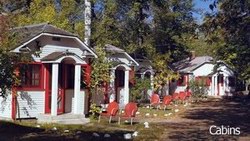 As travel by automobile became more prevalent in the early teens and twenties, the idea of the roadside motel was born. The first incarnation being the "Auto Camp," which were nothing more than plots of land on the roadside where
folks could pitch a tent and sleep outside.
As travel by automobile became more prevalent in the early teens and twenties, the idea of the roadside motel was born. The first incarnation being the "Auto Camp," which were nothing more than plots of land on the roadside where
folks could pitch a tent and sleep outside.
Eventually these camps began to get more elaborate with some locations adding laundries, clubhouses, restrooms (comes in handy!), and even dance halls and barber shops. All of this of course made the pastime of "autobumming" even
more popular. It was a very fun, economical way to travel. New vehicle designs and accessories began to appear to accommodate this new activity to allow for the hauling of luggage. This eventually gave way to the notion of campers
and early versions of the ubiquitous recreational vehicles we see at campgrounds today.
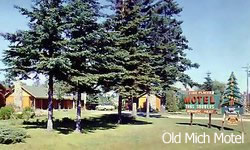 The auto camp flourished until the late 1920's when some of the communities near these camps began to tire of these "tin-can tourists," which was a reference to the canned goods that these folks brought along. This led to many of
the camps being outlawed for being a nuisance and creating sanitation problems. Although many of the smaller camps were wiped out, we obviously can see that this phenomenon lives on in the form of the large RV parks that are seen
all over the country.
The auto camp flourished until the late 1920's when some of the communities near these camps began to tire of these "tin-can tourists," which was a reference to the canned goods that these folks brought along. This led to many of
the camps being outlawed for being a nuisance and creating sanitation problems. Although many of the smaller camps were wiped out, we obviously can see that this phenomenon lives on in the form of the large RV parks that are seen
all over the country.
The next phase in the development of the motel was the tourist cabin. These ranged from private homes that had rooms available for rental to more elaborate facilities with numerous individual cabins, which contained sleeping
accommodations and sometimes kitchens and bathrooms with a shower. At some locations there were restaurants or kitchens in separate buildings.
In the mid 1930's a cabin would bring 50 cents to $1 a night, depending on the amenities offered. This form of lodging was met with great acceptance by the traveling public and this in turn fueled enormous growth in the business,
with nearly 10,000 locations nationwide by the late 1930's.
 This created a bit of an uproar among hotel owners who lobbied the government to regulate the cabin trade. This only caused the cabin folks to upgrade their facilities even further, which resulted in increased competition with the
hotels. By the early 40's, with over 250 million cars on the road, the new motor courts were being built at the rate of 800 per year. The amenities continued to be upgraded as well as air conditioning and phones were installed.
This created a bit of an uproar among hotel owners who lobbied the government to regulate the cabin trade. This only caused the cabin folks to upgrade their facilities even further, which resulted in increased competition with the
hotels. By the early 40's, with over 250 million cars on the road, the new motor courts were being built at the rate of 800 per year. The amenities continued to be upgraded as well as air conditioning and phones were installed.
These cabin courts have largely disappeared from the landscape, although there are some great examples of it left in the Upper Peninsula of Michigan. Although the motel business was booming, an "image problem" began to emerge that
haunts the industry to this day. As criminals began to use motels as hideouts, and couples meeting there for secret encounters, motels were seen as "sleazy." This is when the term "no-tell motel" became prevalent. Nevertheless, the
evolution of the motel continued into the next phase, with even more elaborate concepts designed to entice the weary traveler in what was becoming a very competitive venture.
It was at this point in the late 40's and early 50's that the classic motel designs that we all remember and love began to appear, with the elaborate road signs, and the distinctive architecture that usually reflected the character
of the locality it was in. Swimming pools (with diving boards, remember those?), patios, restaurants and balconies became commonplace. And who could forget the "Magic Fingers" bed massage? Of course much of this growth came from
WWII veterans returning home and opening "mom and pop" operations to satisfy the ever increasing demand for lodging created by the post-war boom in auto sales and travel.
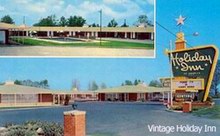 This increase in travel amounted to 22 million vacationers by 1950, with half of them staying in the over 50,000 motels that had been built by then. This led to motels surpassing hotels as the leading supplier of rooms by 1951.
This increase in travel amounted to 22 million vacationers by 1950, with half of them staying in the over 50,000 motels that had been built by then. This led to motels surpassing hotels as the leading supplier of rooms by 1951.
During this time of growth some effective new business strategies began to emerge, namely the referral chain, which were groups of independent owners who banded together for their common good, and the franchise, which laid the
foundation for the large chains to come like Holiday Inn, Howard Johnson's, Ramada Inn and Days Inn.
 The referral idea actually dated back to the early 1900's when the Automobile Club of America, began to identify certain hotels as "officially appointed." This led to guidebooks being published which identified these approved
locations. There was even a letter code system set up to identify what amenities were available at a given locations, for example "CK" meant community kitchen.
The referral idea actually dated back to the early 1900's when the Automobile Club of America, began to identify certain hotels as "officially appointed." This led to guidebooks being published which identified these approved
locations. There was even a letter code system set up to identify what amenities were available at a given locations, for example "CK" meant community kitchen.
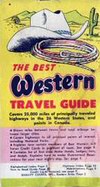 This idea of evaluating and recommending certain lodges was taken a step further by Duncan Hines, who published an annual guide called "Lodging for the Night." Many motels were then putting "Recommended by Duncan Hines" signs in
front of their places. He also published a book entitled "Adventures in Good Eating," which I suppose is the reason that his name appears on cake mix to this day.
This idea of evaluating and recommending certain lodges was taken a step further by Duncan Hines, who published an annual guide called "Lodging for the Night." Many motels were then putting "Recommended by Duncan Hines" signs in
front of their places. He also published a book entitled "Adventures in Good Eating," which I suppose is the reason that his name appears on cake mix to this day.
One of the first successful chains was the Alamo Plaza Tourist Court which was a joint venture between two Texans, Edgar Lee Torrance and Judge J. W. Bartlett. The design of their units was of course inspired by the real Alamo in
Texas. The first unit was built in Waco with a total of 34 being built by 1960.
Best Western, was started by Merill K. Guertin in 1947 when he banded together with 66 other motel owners for the purpose of joint advertising, referral and promotion. The now famous "Crown" logo was adopted in 1962 and BW is still
the largest chain of independents today, with over 2000 locations in the U.S. and Canada.
 It was in 1951 that Kemmons Wilson, a home builder based in Memphis, took a trip with the wife and five kids to Washington D.C. Along the way, he evaluated each motel he stayed in and took copious notes and measurements. Upon
arriving home, he realized that it was the worst trip of his life and was determined to build a motel that would be superior to anything he had seen.
It was in 1951 that Kemmons Wilson, a home builder based in Memphis, took a trip with the wife and five kids to Washington D.C. Along the way, he evaluated each motel he stayed in and took copious notes and measurements. Upon
arriving home, he realized that it was the worst trip of his life and was determined to build a motel that would be superior to anything he had seen.
Mr. Wilson then expressed his ideas to architect Eddie Bluestein who had a concept drawing ready within four days of a one story motel. He had written "Holiday Inn" on the drawing as he happened to be watching the Bing Crosby
classic film of the same name the night before. Needless to say, Kemmons loved both the design and the name! His next move was to contact a local sign
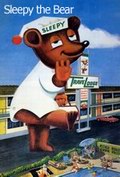 maker to construct a 50-foot sign modeled after a movie marquee (he had once operated a popcorn stand at a theatre as a young lad), and the result was, in my humble opinion, the finest roadside sign ever created in the history of
mankind!
maker to construct a 50-foot sign modeled after a movie marquee (he had once operated a popcorn stand at a theatre as a young lad), and the result was, in my humble opinion, the finest roadside sign ever created in the history of
mankind!
The first Holiday Inn was opened on Sumner Avenue in Memphis in 1952. Wilson quickly added three additional locations in Memphis and he was off and running. He then struck up a deal with Wallace Johnson, president of the National
Association of Home Builders. Together they invited 68 builders to Memphis to promote the franchising concept and a huge chain was born. The franchise fee consisted of a one time payout of $500, with an additional nickel per night
per room as you go. What a deal! Try and get a franchise for that kind of money now! By 1968, there were over 1000 Holiday Inns nationwide.
The success of Holiday Inn invited competition from folks with their own ideas. One of the most notable of these was William Becker's Motel 6. Mr. Becker, a painting contractor, felt that his success lied in creating a motel chain
with a more basic approach, with smaller rooms, for the bargain rate of $6 per night. Although it was necessary to raise rates over time, it proved to be a great hook with the chain eventually growing to 750 units.
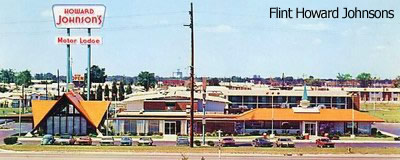 It was a gentleman called Cecil Day, a devout Christian, who popularized the concept of providing a bible to his guests. He also encouraged folks to take them along with them on their travels. His rate was $8 per night and his "Days
Inn" proved to be quite successful. Mr. Day was happy to donate 10 percent of his profits to religious institutions.
It was a gentleman called Cecil Day, a devout Christian, who popularized the concept of providing a bible to his guests. He also encouraged folks to take them along with them on their travels. His rate was $8 per night and his "Days
Inn" proved to be quite successful. Mr. Day was happy to donate 10 percent of his profits to religious institutions.
By 1960, the next leap in the evolution of the motel had occurred with some locations offering up to 300 rooms in multistory buildings, sometimes arranged in an "L" or "U" shape to create a central courtyard complete with swimming
pools and patios. Bars, restaurants, and coffee shops were commonplace. The large chains were undergoing enormous growth during this period which would put pressure on the independents.
By the 1970's, 70% of motels were affiliated with chains and the decline of the independent operator was already well underway. As the chains became larger, the new locations became all the more homogenous and non-descript. By the
1980's these trends
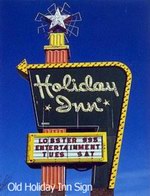 continued and whatever distinct character the chains had left began to disappear. The most tragic example of this was the demise of the original Holiday Inn sign which had become one of the most recognizable road side signs in
history.
continued and whatever distinct character the chains had left began to disappear. The most tragic example of this was the demise of the original Holiday Inn sign which had become one of the most recognizable road side signs in
history.
By the 1990's, many of the motel chains were being bought up by huge conglomerates and the saturation level had been reached.
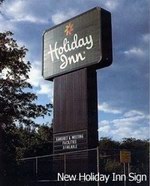 Anything resembling the classic motels were either demolished or relegated to the secondary state roads. In Michigan, however, there are still quite a few prime examples up north and in the Upper Peninsula, particularly along US-2.
In central and southern Michigan, US-12 from Detroit all the way down to Indiana has some nice examples of the genre, and the coastal highways of course are populated with these vintage inns as well. M-37, M-60 and M-66 also have
some old motels of note as well.
Anything resembling the classic motels were either demolished or relegated to the secondary state roads. In Michigan, however, there are still quite a few prime examples up north and in the Upper Peninsula, particularly along US-2.
In central and southern Michigan, US-12 from Detroit all the way down to Indiana has some nice examples of the genre, and the coastal highways of course are populated with these vintage inns as well. M-37, M-60 and M-66 also have
some old motels of note as well.
As far as the old symbols of the road we all knew as the Travel Lodge "Sleepy Bear," the Googie architecture of the Howard Johnsons Motor Lodge, complete with the "Chef and Little Boy" which appeared on the peak of the restaurant,
and the late, great, Holiday Inn marquee, they are gone. The only place to see them is in a museum (Henry Ford in Dearborn has examples of all of these), or that new highway to the past, the internet. To that end, I have added
pictures of all of these on my
"Vintage Signs" page, which will tide you over until can see them in person at the museum.
Gary Ritzenthaler
Sources:
Home Away From Home by John Margolies - Bulfinch Press
Authors recollections